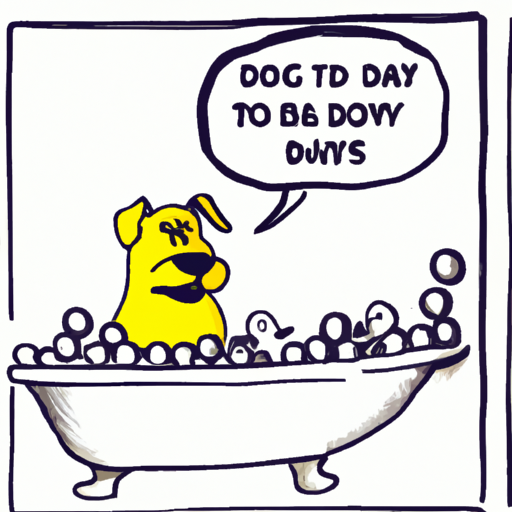Understanding Your Dog’s Perspective
As a caregiver, it’s essential to understand the world from your dog’s perspective. Let’s face it, most dogs would rather play fetch, sniff around the park, or curl up on your lap than jump into a tub of water.
In the wild, dogs are not accustomed to the sensation of being submerged in water. So, when they’re suddenly doused in water, it can be quite startling. Their heightened sense of smell also means that the scents of shampoo and soap can be overpowering.
The Fear Factor
Often, the aversion to baths can be traced back to a bad experience. If a dog has had a traumatic encounter with water – perhaps they’ve fallen into a pool or been forced into a bath when they were frightened – they may associate bath time with fear and distress. This is why it’s so important to make bath time a positive and calming experience for them.
- Introduce them to water gently
- Use warm water to avoid shock
- Provide treats and toys to create a positive association
The Importance of Preparation
Proper preparation can make all the difference. Here’s a simple checklist to follow:
- Choose the right location: Use a small tub or sink for small dogs, and a bathtub or even an outdoor area for larger breeds.
- Gather Supplies: Have everything ready before bringing your dog in. This includes the right dog-friendly shampoo, a large towel, and a non-slip mat.
- Protect their ears: Water and soap can irritate your dog’s ears. Use cotton balls to gently block the ear canal.
The Right Techniques
When you bathe your dog, consider these techniques to make the process less stressful:
- Start slow: Allow your dog to gradually get used to the sensation of water.
- Keep it warm: Dogs can be sensitive to temperature. Make sure the water is warm, not hot or cold.
- Avoid the face: Keep soap and water away from your dog’s face and eyes. Instead, use a damp cloth to gently clean these areas.
After the Bath
Don’t forget the aftercare. Dogs can easily feel chilled after a bath, so it’s vital to dry them off properly. Use a towel and a pet-friendly dryer if necessary. Reward them with a treat or a favorite activity after the bath to end the experience positively.
| Steps | Description |
|---|---|
| Dry | Use a towel to remove excess water |
| Brush | Remove any loose hair and untangle fur |
| Reward | Give your dog a treat or play a game |
FAQ
Q: How often should I bathe my dog?
A: Most dogs only need a bath once a month. But it depends on their breed, size, and lifestyle.
Q: Can I use human shampoo on my dog?
A: No, human shampoo can dry out their skin and coat. Always use a dog-friendly shampoo.
Q: What if my dog absolutely hates baths?
A: You can try using dog wipes or a dry shampoo in between baths. If your dog’s fear seems extreme, it might be worth checking with a vet or a professional dog trainer.
Q: How can I protect my dog’s ears during bath time?
A: Gently place cotton balls in your dog’s ears to keep water out, but be careful not to push them in too far.
Q: Can I bathe my dog outside?
A: Yes, if the weather is warm. Just make sure to use a leash or enclosure to keep your dog safe and secure.
In conclusion, understanding your dog’s aversion to baths requires empathy, patience, and a little bit of canine psychology. With the right approach, you can make bath time a positive, stress-free experience for your furry friend.



